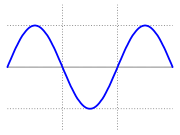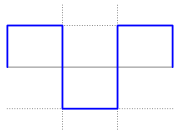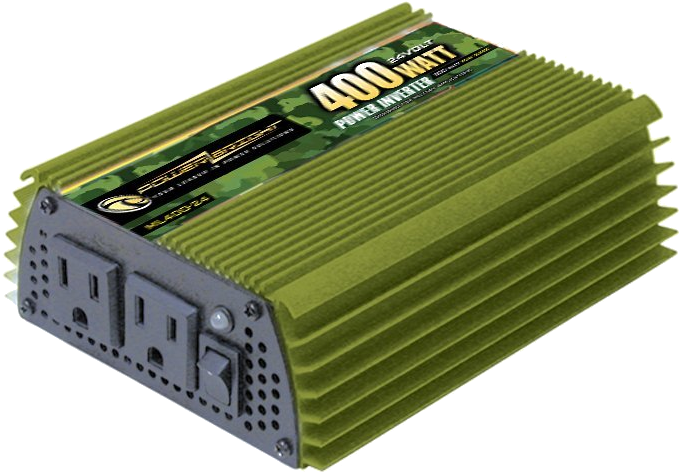


A power inverter is an electronic device containing circuitry that changes direct current (DC), for example from a batter, into alternating current (AC), which is the sort that you have in your house. Often, this means a change in voltage as well such as from a 12-Volt car battery to 110 Volts.
Typically, an inverter requires a relatively stable DC power source capable of supplying enough current (as measured in Amperes) to meet the intended power demands of the system including appliances to be plugged into it.
Power inverters "vibrate" the otherwise steady, direct current in, ideally, a sine wave fashion (see first illustration), but in practice, the less expensive the inverter, the more it's just a "square wave" that is electrically noisy and often damaging to equipment powered with it. The wave produced by most inverters is called a "modified sine wave" and looks like an intermediate approximation between these two illustrations.

|

|
Because of the limitations of inexpensive power inverters, they are dirty and create problems. Here is a list of common problems created by inverters.
Wiring such circuits is difficult and can be fraught with peril! Don't assume because you were good at electricity in high school that everything you know about series, parallel, positive and negative equips you with a fool-proof ability to wire fancy circuits up using an inverter.
It is out of the question to attempt to tie two inverters in parallel, for example, in an attempt to bolster the capacity of a single electrical circuit. This is because you cannot synchronize the wave patterns of two inverters. (There are catastrophe videos on YouTube illustrating the perils of random inverter experimentation.
When in doubt, and you should pretty much always be in that state, just wire your house inverter use as if you were using appliances in your recreational vehical: use the inverter's outlets.
Yes, just as you can do that in your recreational vehicle. Just take care not to merge the 110-Volt AC side of them because sparks will fly! Treat them as two, separate circuits and you may also find other rules of isolation to consider like not powering your computer with one and its monitor with the other. It may work, but you may also find "noise" or crazy stuff going on you can't explain.
Inverters tend to be rated with a value expressed as "VA."
VA stands for "Volt-Ampere." It's a measurement of power in a direct current (DC) circuit. Technically, 1 VA is the equivalent of 1 Watt because of the equation power (in Watts) is equal to intensity (in Volts) multiplied by current or energy (in Amperes):
P = I × E
However, in practice, circuits and appliances, like inverters, are never anything like perfect.
A simple way to correlated VA to Watt is to multiply the VA rating by a constant known as the "power factor." For most devices this is between .8 and .9. When the power factor is unknown or unmarked, assume .8. Therefore, to operate an appliance rated at 800 Watts, you'll need an inverter of at least 1000 VA. A better and safer rule of thumb, however, is to assume 50-60% loss from a circuit.
You will also need to subtract some capacity lost to length of power cable and connections.

A good precaution to take is to put a fuse rated at or just under the inverter's noted capacity to protect it from overload. Then, when the inverter no longer seems to work, you can check and, most often, just replace the fuse to get it working again. Most inverters offer fuses already built in. It's a good idea to examine it and find spares.